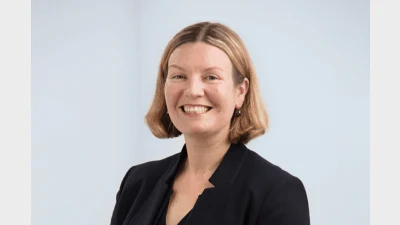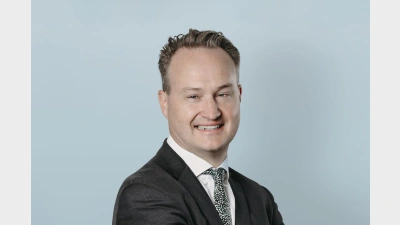Custody moves to centre stage


Many superannuation fund trustees have regarded custodians as a necessary service provider but one which is mostly out of sight and out of mind but, as Damon Taylor reports, the changing dynamics of superannaution funds, including the in-housing of asset allocation, has brough the role of custodians right into the spotlight.
In the years that have followed the global financial crisis (GFC), few service providers have proven as integral to Australia's superannuation industry as custodians.
Yet on the back of both legislative and regulatory change, even fewer service providers have seen such sweeping and dramatic changes to both the environment that they operate within, as well as the services they are requested to produce.
In many cases, these are changes that have taken years to implement but for David Braga, Head of BNP Paribas Securities Services Australia and New Zealand, it has certainly made the custody journey an interesting one.
"Yes, its quite interesting to look back over the last 15 years in terms of how things have developed," he said. "At one level, what it takes to be a great custodian hasn't actually changed a lot but what has changed are the expectations."
"Clients want to get the services that they need and the features that they need at a reasonable cost," Braga continued. "But I think everyone takes that for granted – they know they're going to get the services they need, that they're going to get them at a decent price – so what they're actually looking for is the right partner."
"They want someone who can look after them when it comes to delivering change, whether its regulation-related or bottom-up, but its also about supporting the client with their strategic goals both now and into the foreseeable future."
Focusing instead on the substantially increased service offering that custodians now offer and comparing it to what was offered even just 10 years ago, Chris Taylor, Head of Global Services & Global Markets, Australia for State Street, said that a number of themes had emerged.
"Clients want to get the services that they need and the features that they need at a reasonable cost." – David Braga
"At one point, I think its fair to say that we were almost exclusively focused on the investments, the accounting as it pertained to those investments, and then the provision of data and analytics around those investments," he said. "But while those sorts of services have remained constant, its our clients' increased allocation to alternative assets that's changed the scope of exactly what those services entail."
"Funds are seeking return via private equity, real estate, infrastructure and, to a lesser extent, hedge funds but they're also managing the assets themselves or managing the asset allocation or some combination thereof," Taylor continued.
"And so they're suddenly requiring middle-office information, an investment book of records as opposed to an accounting book of records and so on."
Looking beyond accumulation
And quite apart from an altered investment focus, Taylor said that an altered member focus was equally in evidence.
"So the example that's easiest to point to at the moment is super funds' increased focus on the pension phase," he said. "And that has a whole range of operational implications because our conversations with clients are suddenly about pension outcomes, retirement incomes, segregation of assets, tax efficiency in that phase, longevity and so on."
"Its basically mass personalisation of the accounts and the information relating to members," Taylor explained. "So historically, we would service the fund but to a certain extent, we're now servicing the member as well."
"We're providing that look-through to the underlying member so that both the fund and the individual member can get better efficiencies in the management of their assets."
Offering a slightly different perspective, Braga said that while a lower yield environment and increased allocations to alternatives had certainly been factors, the additional services required of custodians were also a by-product of capital inflows and the weight of capital that now existed within the super industry.
"So one of the data points that I think is quite illuminative for this is to look back to 2004 and grab the APRA (Australian Prudential Regulation Authority) details for how big the superannuation industry was at that time," he said. "And if you compare it to the total capitalisation of the ASX (Australian Stock Exchange), in 2004 super fund assets were 75 per cent compared to the ASX market cap aggregate."
"But then by 2013, it was 120 per cent and what that means is that the super funds were 120 per cent of the stock exchange in terms of market capitalisation," Braga continued. "So just looking at it in the round, the funds have to invest a lot more cross-border and a lot more into complex assets because that weight of capital has to be deployed somewhere."
"And clearly, when it comes to the back-office administration of those assets, that sort of change has some significant implications for us as a custodian."
Yet despite any increase in service or complexity that may have arisen as a result of both superannuation and investment market evolution, Braga said that the most important service a custodian would ever provide was a partnership.
"In this sort of environment, super funds need someone at the table who can help them solve those problems as well," he said. "So whether its helping our clients find the right opportunities throughout Europe and leveraging our expertise at a banking level or assisting with merger and acquisition activity or even simply ongoing investment into key services, I think that's the new dynamic here."
"Its having the right organisation at the table with them, an organisation that can help them with all those aspects of the challenge and not just the back-office processing."
Of course the challenges inherent in custody that both Braga and Taylor agree on mean that custodians cannot afford to be standing still. Continuous improvement is a given and according to Angelo Calvitto, Senior Vice President and head of sales and relationship management for Northern Trust, Northern Trust's efforts are firmly focused not just on data provision but on provision of that data on a realtime basis.
"So when it comes to the services we're providing to both existing and new clients, daily information is almost mandatory now, even to the point of intra-day," he said. "So quite a bit of time's being spent on that front, particularly with respect to the performance analytics and the investment risk piece."
"Our superannuation fund clients are looking for data at the portfolio level, the investment manager level, the asset class or sector level, at the option level," continued Calvitto. "And they're asking us for the analytics top-down, looking right through down to the manager and bottom-up but then they're also interested in being able to slice and dice that data across different sectors and across different options."
"So we're being asked to really break this data down for performance and analytical purposes, to help and support our clients manage the investment oversight, manage the risk and really understand what's happening in the portfolio on a daily basis."
Describing a slightly different focus, Ian Perkins, Head of Client Development for BNP Paribas Securities Services, said that much of BNP Paribas' work revolved around a few key themes that had recently come to the fore for super funds.
"Firstly, its around meeting regulatory requirements and continuing to ensure our technology is developed and up-to-date to meet those regulatory requirements," he said. "And there are two components to that really; one is the local regulatory environment but in a global context, regulatory change is prevalent around the world so we're also looking at what's going on in other markets and how we can leverage our offshore technology capability as well."
"Another concern many of our clients have is risk analytics and so we're continuing to evolve our risk analytics capability, which is already very very strong, but we're now extending it to ESG [environmental, social and governance factors] and analytical tools to aid with decision making."
"And finally, as some of our larger client funds are looking to in-source more and more of their asset management capability, we're helping them streamline that activity by supporting their front-office through the addition of our own middle-office services."
Yet as much benefit as this sort of continuous improvement and innovation provides, Calvitto believes the perennial challenge for custodians is the pace of change, particularly as it relates to regulation and investment.
"And we're seeing this globally across a whole sphere of sectors and asset classes, be it derivatives, unlisted assets, and then the provision of data, the data reporting requirements back to the regulator," he said. So if we use the example of APRA and their data reporting requirements that have grown extensively over the last couple of years, this has presented challenges for custodians."
"At Northern Trust, we've found ourselves in the fortunate situation where, being on a single, global technology platform, we were able to draw on the expertise and knowledge of other markets and in many cases, we'd already done this somewhere else," Calvitto continued. "So we were able to draw – for APRA in particular – on data extraction that we'd built for the Dutch market, which is very very similar."
"But its that constant change coming from regulation off the back of the global financial crisis, where regulators in particular and the funds themselves are looking for greater transparency and more detailed information in terms of the underlying assets."
Delivering on asset allocation
Indeed for Taylor, the more asset types that super funds wish to invest in and the more reporting that is inevitably required by both individual super funds and individual regulators, the more complex is the task confronting custodians.
"So I mentioned funds' increased allocation to alternative assets previously but the registration of unlisted assets is a cumbersome process," he said. "And that's relevant not only to super funds but to the asset classes themselves as well."
"In fact, the biggest thing is probably the movement of data in better and more sophisticated ways through the industry," Taylor continued. "And again, that comes back to some of those asset types, whether you're in a general or limited partnership, whether you're in trust or whatever, the quality of the look-through of the data remains problematic across the board."
"It impacts your ability to provide, for example, that portfolio holdings disclosure data, your ability to give detailed risk information about aggregate exposures etc – you might be holding a whole series of trusts with related activities but what assets are those trusts holding?"
According to Taylor, it could even be that the time was ripe for a more investment-centric version of SuperStream to be brought to bear.
"Something like that would certainly help," he said. "Because at one level, there is some awareness from the Government and the regulators around the opportunity and the cost associated with implementing all these changes, reconfiguring the systems and the like."
"But there also needs to be an acknowledgment of the cost associated with compliance," Taylor added. "I'm not suggesting for a moment that its inappropriate or wrong but there are significant costs and time and effort involved in implementing these changes on the part of super funds, on the part of fund managers and on the part of custodians."
However as challenging as the business of custody has become in recent years, the increasingly competitive nature of Australia's superannuation industry means that custodians have to be just as responsive to tender activity as they are to regulatory change.
But while Calvitto admitted that custodians watched all market activity with great interest, he said that for Northern Trust, client retention was key.
"So we work very hard to be as close and in touch with what's happening in the marketplace as possible," he said. "In Australia in particular, the custody consulting community is quite active so we're very close to them as well and look to constantly keep them updated as to what's happening at Northern Trust – new products and services, the development of technology, and so on."
"But in terms of specific strategies, Northern Trust is very much a client-led firm," Calvitto continued. "So client retention is at the forefront of everything we do which means that building long term partnerships with our clients is very very important."
"So we've got a very strong client base and we want to be known for providing the best service to all our clients, which is why this side of the business becomes such a tricky balancing act." – Ian Perkins
"And with more than 50 per cent of Northern Trust clients globally having been with us for over 10 years, its a very key element of our value proposition as well."
Similarly, Perkins said that while BNP Paribas was aware of any and all activity in the market, they also had defined strategy around what opportunities they would and would not pursue.
"In some cases, we'll have a global strategy and approach around tender activity but it often comes down to alignment," he said. "For example, at BNP Paribas we have very strong middle office capabilities and so we think we're a good fit with superannuation funds that are managing their own assets in-house."
"But that's just one example where others may not be as focused on that part of the value chain," Perkins explained. "The other area we excel in is with regard to the more sophisticated funds who are very interested in our risk analytics capabilities."
"We see ourselves as a very strong complement to their business strategy there."
And while client acquisition would always be important, Perkins admitted that client retention was fundamental to custody.
"You don't want to be winning business at the same time as you're losing business," he said. "So we've got a very strong client base and we want to be known for providing the best service to all our clients, which is why this side of the business becomes such a tricky balancing act."
"We have to constantly provide strong service capability to existing clients and, at the same time, ensure we're gearing up to potentially take on additional clients as the right opportunities present."
Echoing Perkins, Taylor said that the retention of large clients won in the last 4 or 5 years was inevitably a custodian's primary focus and responsibility.
"And I say that because even though we're one of the largest custodians in the Australian marketplace, and even though we have enormous global scale, what I cannot allow to happen is for our sales and business development activities to impair or impact my operational capabilities when it comes to servicing my existing clients."
"So on that basis, a lot of time and effort goes into the resiliency of existing clients and then the on-boarding and timing around those new client acquisitions."
Thus with custody provision to the super industry an ever dynamic mix of changes in line with regulation, investment and competition, Braga said that BNP Paribas' focus through 2015 and beyond would be about enhancing its internal capability.
"So I think a lot of what we're doing is based on our capability levels around risk reporting, providing support for funds that are looking at in-housing their asset management and then ensuring that we're also developing and investing in our people," he said. "And I say that because we want to make sure that we're equipping them to be successful in supporting our clients not just now but into the future."
For State Street, Taylor said that the gameplan was all about the quality of the technology and the data.
"People often talk about the technology," he said. "But this business is actually about the data and the technology's ability to work with that data."
"So within all of the things that I talked about, particularly on the reporting, on the performance, the analytics, the risk, the middle-office – it's largely about the provision of data and so that's the piece that we're constantly looking to improve."
Yet in an environment in which tender activity is constant and in which mandates seem often to be changing hands, Calvitto said that the future was about positioning a custody business for future growth.
"Look, its a very very competitive market in Australia at the moment," he said. "In my 20-plus years experience in this industry, I haven't seen it as competitive as this."
"Australia is one of the fastest growing markets globally, its about the fourth largest funds market in the world which is quite substantial for a population of our size and so a lot of our activity is focused on growing the business across all segments of the market," Calvitto continued. "And we're very proud of our success to date in our short time in the Australian market."
"According to recent ACSA (Australian Custodial Services Association) stats, we were the fastest growing custodian for the last 6 months of 2014 at about 18.5 per cent growth and we're very keen to keep that momentum going."
Recommended for you
Economic growth was weaker than expected, once again highlighting an economy largely sustained by population growth and government spending.
In this latest edition, Anna Shelley, CIO at AMP, shares the fund’s approach to current market conditions and where it continues to uncover key opportunities.
The mega fund has announced a $2.2 billion investment in a leading data centre platform, bringing its global real assets portfolio to nearly $60 billion.
In this latest edition, Australian Retirement Trust’s head of global real assets Michael Weaver explains the fund’s approach to finding new opportunities as it surpasses $300 billion in funds under management.













